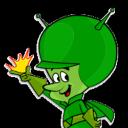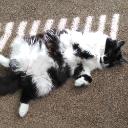Yahoo Answers is shutting down on May 4th, 2021 (Eastern Time) and beginning April 20th, 2021 (Eastern Time) the Yahoo Answers website will be in read-only mode. There will be no changes to other Yahoo properties or services, or your Yahoo account. You can find more information about the Yahoo Answers shutdown and how to download your data on this help page.
Trending News
How do anthropologists know whether skeletons of ancient humans were male or female?
You read any anthropological literature and they'll refer to a skeleton as male or female but they can't possibly know. Perhaps that individual they erroneously call male identified as a female. These anthropologists obviously know nothing about science and they're just hate filled cis transphobes.
9 Answers
- Anonymous1 week agoFavorite Answer
Ancient humans knew they were male or female and stayed that way.
- Godless GazooLv 71 week ago
There are several ways. The easiest to see if the pelvis of a female is much more open for childbirth. But you can tell even from just a skull.
- CarolOklaLv 71 week ago
Adult emales have wider hips than adult males . There is also DNA and chemical.analysis,
Sometimes more than one person's bones are are used to make a skeleton.
Don't project and transfer your ignorance onto other people.
- How do you think about the answers? You can sign in to vote the answer.
- frombrumLv 71 week ago
Pelvis and brow ridge difference
But I'm sure a very few are wrong but why does that matter
- Anonymous1 week ago
That depends.
For non Christian anthropologists they examine the pelvis and skull.
Christian anthopologists count the ribs, then give up because both sexes have the same number. It is at this point they hand it over to real scientists.
- Anonymous1 week ago
A skeleton's overall size and sturdiness give some clues. Within the same population, males tend to have larger, more robust bones and joint surfaces, and more bone development at muscle attachment sites. However, the pelvis is the best sex-related skeletal indicator, because of distinct features adapted for childbearing. The skull also has features that can indicate sex, though slightly less reliably.





